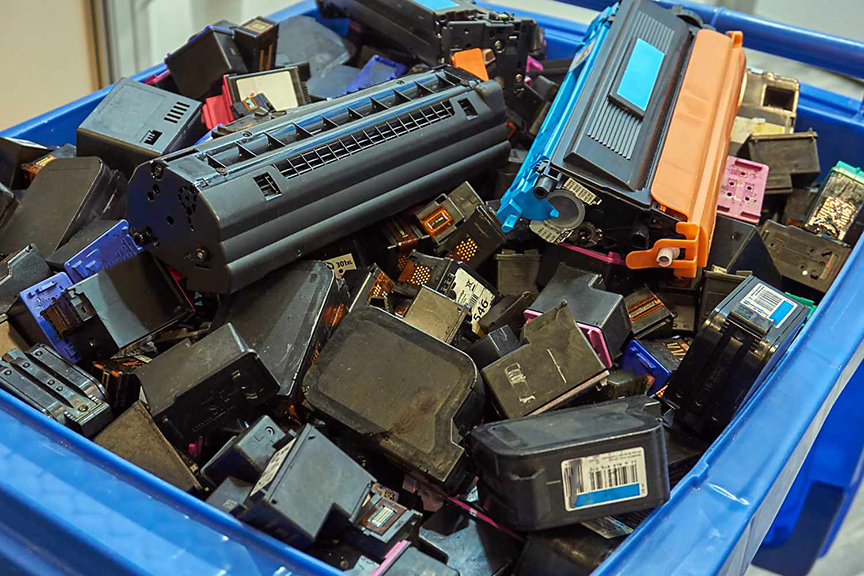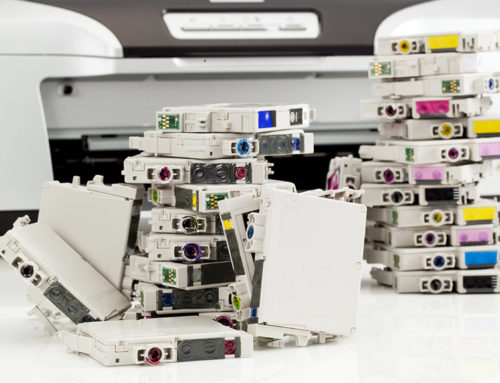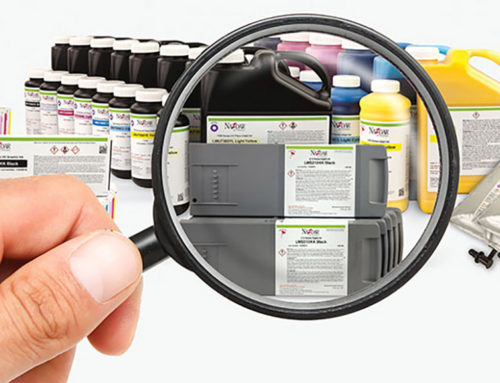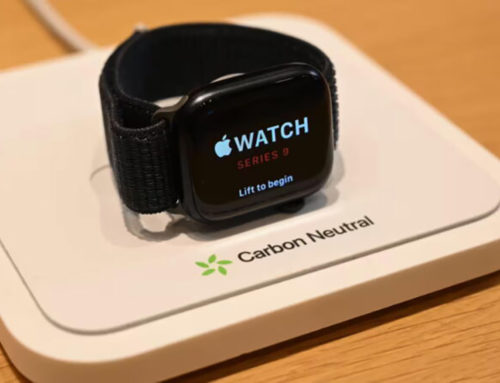Each year, a staggering number of used ink cartridges are discarded, contributing to the growing issue of electronic waste. The Environmental Protection Agency (EPA) suggests upwards of 375 million plastic ink cartridges enter US landfills daily and numbers are growing. They reported that in 2010 alone, over 2.3 million tons of electronic devices were ready for end-of-life management, that number has more than doubled. As time progresses, the consumption of electronics continues to rise, amplifying concerns about the proper disposal of electronic devices and their associated accessories.
Within each ink cartridge lies plastics, metals, and hazardous materials, underscoring the significance of recycling as the optimal environmentally responsible choice.
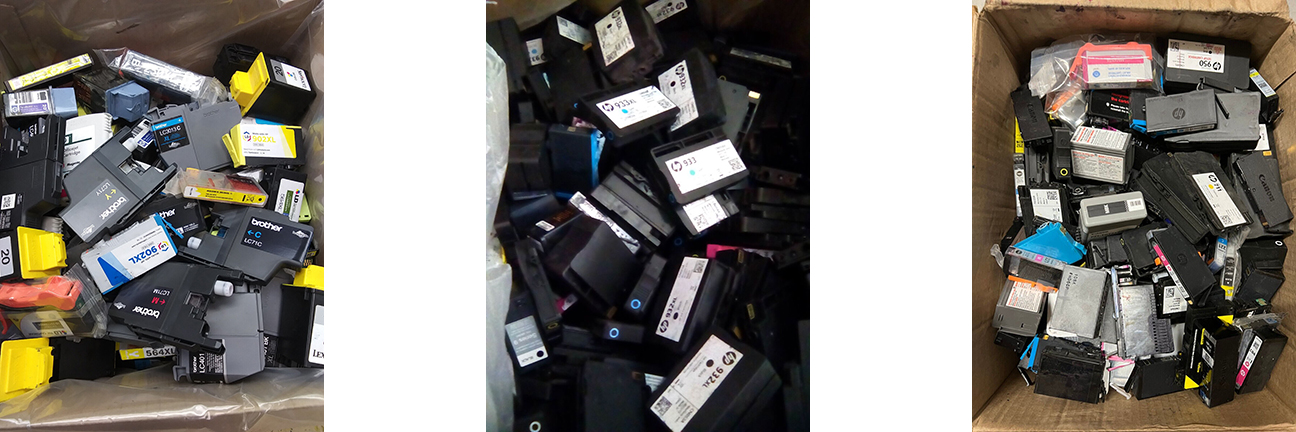
Embracing Recycling as the Ideal Solution
Inkjet cartridges are a harm the environment if not disposed of correctly. The following statistics highlight the imperative nature of recycling:
The production of ink cartridges involves substantial quantities of raw materials. Essential components such as plastic and steel play a pivotal role. Notably, plastic production across various industries relies on approximately 191 billion barrels of LPG and NGL (Natural Gas Liquid) each year.
Black ink comprises a key ingredient called carbon black, synthesized through the combustion of heavy petroleum products. Not only is this production process environmentally detrimental, but carbon black has also been identified as a potential human carcinogen. Incorrect disposal practices leads to detrimental environmental consequences.
An astonishing 375+ million cartridges are discarded annually in the US alone. For instance, a standard cartridge like HP C6578DE weighs around 159 grams. To put this in perspective, one million of these cartridges in a landfill would equate to over 17,500 tons of waste – equivalent to more than 11,000 Toyota Prius vehicles.
The plastics employed in these cartridges consist of diverse resins, with decomposition times ranging from 450 to 1,000 years.
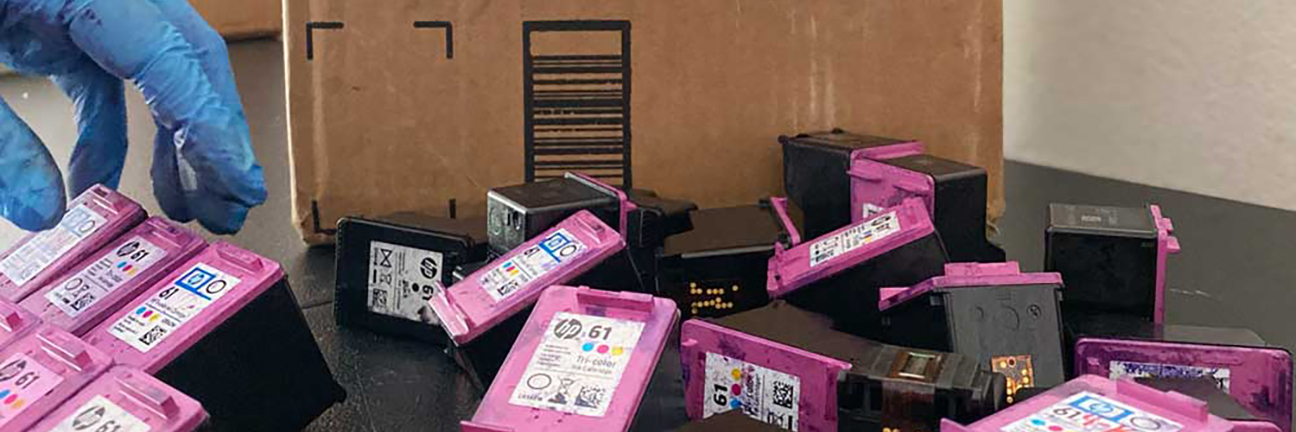
Collective Actions for a Greener Future
Mitigating the environmental impact of used ink cartridges can be achieved through responsible recycling practices. Empty ink cartridges do not go into the blue recycling bin, they will not get recycled alongside other household trash. Remanufacturing, however, offers a viable approach to extending their lifespan. This process involves meticulous steps such as cleaning, disassembling, inspecting components, incorporating new cores, replacing worn parts like printer heads, and refilling ink wells with manufacturer-specified ink.
By adopting remanufacturing practices, energy and materials are conserved through the reuse of plastics and metals. Most importantly, this approach significantly reduces the volume of cartridges ending up in landfills or undergoing incineration.
Incentivizing Recycling Efforts
Numerous individuals and groups have effectively utilized our fundraising program to support diverse causes. Companies like Planet Green Recycle, as US recycler and remanufacture disbursed funds to organizations in exchange for empty ink cartridges sent in on their behalf. Through this program, local schools, nonprofit organizations, sports clubs, and religious institutions have garnered financial support while helping reduce the impact of plastic waste on the environment.
In the face of mounting concerns over the influx of plastic waste into our environment, the significance of proper ink cartridge recycling and the adoption of remanufactured ink cartridges cannot be understated. The plastics contained within ink cartridges contribute substantially to the global plastic waste predicament. By embracing responsible good recycling practices and investing purchases in remanufactured cartridges, consumers take a proactive step toward curbing the deluge of plastic waste. This approach not only reduces the demand for new plastic production but also extends the lifecycle of existing materials. Through these concerted efforts, consumers contribute to the broader movement of reducing plastic pollution and e-waste and conserving our planet’s delicate ecosystems.

